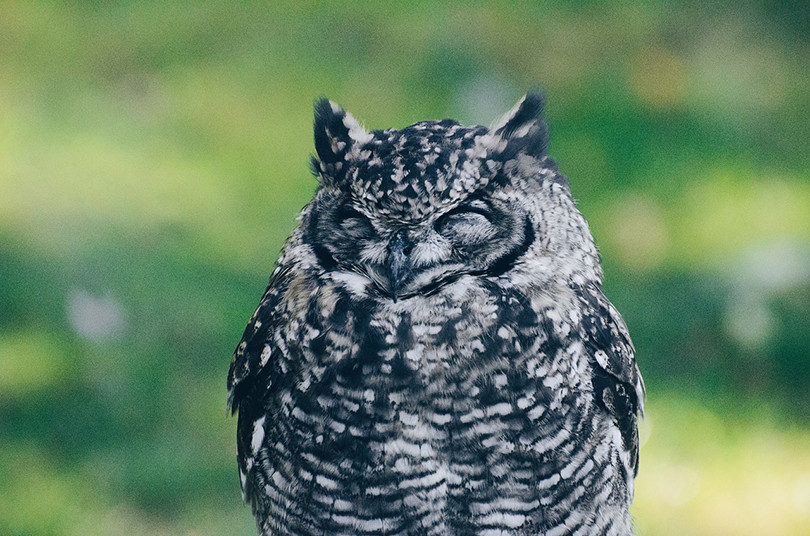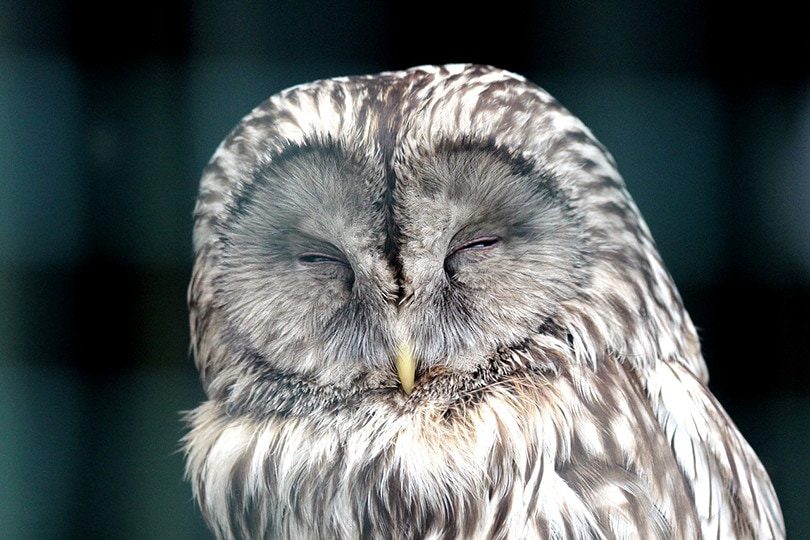How Do Owls Sleep & Where Do They Sleep?
Last Updated on

Most people know that owls are nocturnal, sleeping during the day and waking at night. There’s a lot more to owl sleep cycles, however.
So, where do owls sleep and how do they sleep? Owls typically sleep facing forward, but may sleep with their heads backward in the cavities of trees, cliff ledges, or deserted buildings. Baby owls (owlets) are unable to hold up their heavy heads, so they sleep on their sides or face down.

Owls Are Nocturnal
Owls are nocturnal, meaning they’re active during night hours. Many other animals are active at night, such as hedgehogs, moles, rabbits, raccoons, bats, spiders, frogs, lizards, and turtles. Once it’s dark, owls can hunt other nocturnal animals like reptiles, rodents, and amphibians.
For nesting, owls prefer dark places free from human or predator activity. Most species sleep in tree cavities, but owls make nests in a variety of ways. Some use squirrel or hawk nests, while others nest in the ground.

Where Do Owls Sleep?
Owls are solitary creatures, unlike many birds. Most owls sleep alone and do all foraging and hunting activities alone, though some species will sleep in groups to survive harsh winters. During the breeding season, owls sleep alone near the nest.
The rest of the time, owls sleep in hollow trees, deserted buildings, chimneys, and other dark, enclosed, and safe places. Most owls don’t sleep in their own nest – instead, they prefer to stay near it. Owls will also steal other animals’ nests, such as eagles, falcons, and hawks. Owl nests are called “roosts.”
How Do Owls Sleep?
Owls sleep during the day and similarly to other birds. They sleep with their head forward, standing on their legs and gripping the branch of a tree or the edges of a cavity.
On average, owls will sleep about 12 hours during the day. Most owls sleep during this period, but a few species do sleep at night.
Sometimes, an owl will hunt during the day, though this is usually to get more food or find scarce food. Most of the owl’s prey animals are also nocturnal, such as reptiles and rodents. Owls have incredible night vision and hearing, which allows them to hunt with stealth and capture quick and elusive nocturnal animals.
- See also: Do Owls Sleep on Their Stomach?

Baby Owls Sleep Like Baby Humans
Owlets sleep lying down, much like humans. As babies, owls are blind, so they can’t focus on bright light as well as an adult. Their sleep and wake cycles are based on the noises around them or the vibrations they feel in the ground.
Once owlets mature, they will sleep with their heads up like adult owls.

Conclusion
Most owls are nocturnal and exhibit different sleeping patterns compared to other birds. Owls will typically roost in hollows of trees, cliff ledges, abandoned buildings, and chimneys, where they can enjoy darkness, quiet, and safety from predators. Owlets sleep a lot like human babies – on their sides or facedown – but once they mature, they sleep standing up like their adult counterparts.
Featured Image Credit: StockSnap, Pixabay
About the Author Robert Sparks
Robert’s obsession with all things optical started early in life, when his optician father would bring home prototypes for Robert to play with. Nowadays, Robert is dedicated to helping others find the right optics for their needs. His hobbies include astronomy, astrophysics, and model building. Originally from Newark, NJ, he resides in Santa Fe, New Mexico, where the nighttime skies are filled with glittering stars.
Related Articles:
How to Clean a Refractor Telescope: Step-by-Step Guide
How to Clean a Telescope Eyepiece: Step-by-Step Guide
How to Clean a Rifle Scope: 8 Expert Tips
Monocular vs Telescope: Differences Explained (With Pictures)
What Is a Monocular Used For? 8 Common Functions
How to Clean a Telescope Mirror: 8 Expert Tips
Brightfield vs Phase Contrast Microscopy: The Differences Explained
SkyCamHD Drone Review: Pros, Cons, FAQ, & Verdict
